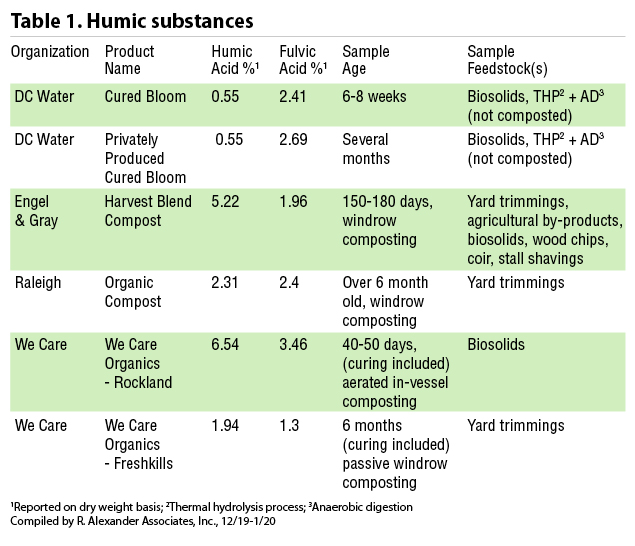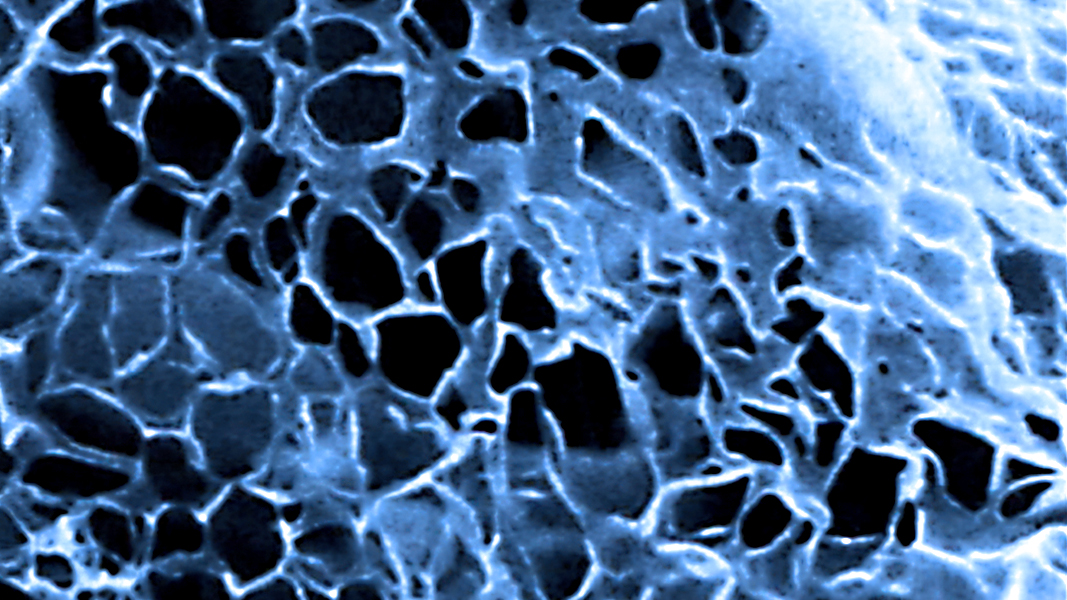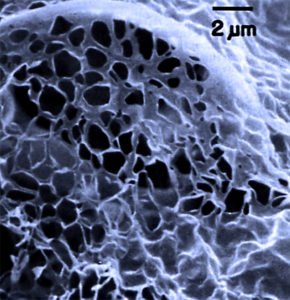Ron Alexander
Humus is the dark organic matter that forms in soil when dead plant and animal matter are thoroughly degraded, specifically through the action of anaerobic organisms. It is difficult to define humus precisely, because it is a very complex substance that is not fully understood. Humus is different from decomposing soil organic matter, as fully humified humus has a uniformly dark, spongy appearance, and has no determinate shape, structure, or quality (Di Giovanni, et al, 1998). Although formed through the microbial degradation of organic matter, it is stabilized to a point that it resists further degradation.
All organic matter is not humus, but humus is an important fraction of organic matter (about 35-55 percent of the non-living part of organic matter, according to a UN Food & Agriculture Organization paper on organic matter (Bot and Benites, 2005)). Humification can occur naturally in soil, or can occur artificially, during the production of compost. Organic matter is humified by a combination of saprotrophic fungi, bacteria, microbes and animals such as earthworms, nematodes, protozoa, and arthropods (modified from Wikipedia, July 2020). It is commonly believed that humus is created through anaerobic fermentation, while compost is created through aerobic decomposition.
Humus, and the humic and fulvic substances that are found within it, have the ability to provide a variety of benefits to the soil, such as:
- Improving water holding capacity
- Improving nutrient retention (through an increased cation exchange capacity)
- Providing nutrients to soil microbes
- Improving the aggregation of soil particles (enhancing air, water, etc. movement)
Humic and fulvic substances can also enhance plant growth directly through physiological and nutritional effects. Some of these substances function as natural plant hormones and are capable of improving seed germination, root initiation, uptake of plant nutrients, and can serve as sources of nitrogen, phosphorus and sulfur (modified from Tan, 1994; Schnitzer, 1986).
Revised AAPFCO Definition
The formation of humic substances is not yet fully understood, but several popular theories exist (e.g., lignin theory, polyphenol theory, etc.). While humic substances are found in soil, compost, and other materials, they are found there in a more diluted amount. Deposits of concentrated humic substances have even been discovered in nature (e.g., Leonardite), and are being harvested for sale to the horticultural and agricultural sectors. The Association of American Plant Food Control Officials (AAPFCO) has approved a revised definition for humic substances (and related materials). However you could argue that the new definition may better describe concentrated, mined humic substances:
Humic Substances – constituents of soil organic matter and the aquatic environment, consisting of complex heterogeneous mixtures of carbon-based substances formed by biochemical reactions during the decay and transformation of plant and microbial remains. They are primarily composed of three main fractions, called humic acids, fulvic acids, and humin, which are operationally defined by their solubility in dilute alkali and acid solutions. Sources of humic substances are commercially harvested from terrestrial deposits which include, but are not limited to, Leonardite, oxidized lignite, oxidized sub-bituminous coals, humalite, carbonaceous shales (including humic shale), peat, and sapropel. (AAPFCO)
Notice that the definition above suggests that humic substances are ”commercially harvested (mined) from terrestrial deposits,” thereby excluding composts. Regardless of this definition (favoring mined substances), many State Control Officials will allow compost to claim humic substance content.
In addition to this new definition for humic substances, AAPFCO approved a new test method for measuring humic substances. As a means to prove that compost (and products derived from decomposing organic matter) contain humic substances, I tested a series of products using the new AAPFCO approved method. The results can be seen in Table 1. (Thank you to the organizations listed that provided products to sample.) Although a lot more analysis is required, it appears that older compost products possess higher levels of humic substances (as do biosolids- based products).

Correlating Research Data
A search of the literature provides correlating research data. Harada (1980) noted that many studies have been completed illustrating the positive relationship between cation exchange capacity (CEC) and the degree of humification of soil humic substances. Kumada (1956) reported that the CEC of soil humic acid increased as humification progressed. Millar et al. (1936) found a positive correlation between the CEC of decomposing organic matter and its lignin content. Therefore, Harada concluded that the degree of maturity of (city refuse) compost can be assessed by measuring its CEC. Further, regression analyses yielded a highly significant negative correlation between CEC and C:N ratio of (city refuse) compost. The CEC increased as the C:N ratio decreased.
The researchers also concluded that composts were considered to have been sufficiently matured for application, once the CEC was greater than approximately 60 meq/100g (of ash-free material). Al-Alwari et al. (2019) found during their green waste composting trials that the CEC value rose substantially (over time from 37.1 to 160.1 meq/100g) after 30 days of composting. Finally, Smidt et al. (2007), using spectroscopic analysis, found that humic acid content in compost increased during the composting process.
What Does This All Mean?
Compost contains humic substances, which are very stable forms of organic matter, and are important components of healthy soils. There appears to be a strong positive correlation between compost stability, and both CEC and the content of humic substances. Note: humic substances possess very high CECs. This correlation suggests that extending composting and/or curing phases, or optimizing these processes, could create composts containing greater levels of humic substances. Obviously, additional research is required to verify these claims.
The takeaway is that as compost applications are identified which require, or can be improved by, composts possessing higher CECs (e.g., bioretention soils, contaminated soil reclamation, revegetation of sandy soils, etc.), composters could modify their processes to create a product that better suits the requirements of specific applications. It could also raise the interest and value of compost used in soil and water protection applications.
Ron Alexander is president of R. Alexander Associates, Inc. (Apex, North Carolina, 919-367-8350, www.alexassoc.net), a company specializing in product and market development for organic recycled products. He is author of ‘The Practical Guide to Compost Marketing and Sales (2nd Edition published by BioCycle) and has over 35 years of experience in compost marketing. Mr. Alexander serves as an Industry Liaison to AAPFCO (Association of American Plant Food Control Officials) and assists companies in listing their products.














